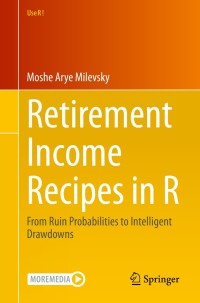Question
You are required to perform the following: (1)Draw the one-line diagram of the distribution system under analysis. Name all components. (2)Calculate the short-circuit impedance of

You are required to perform the following: (1)Draw the one-line diagram of the distribution system under analysis. Name all components.
(2)Calculate the short-circuit impedance of the infinite bus.
(3)The electric loads given above could be replaced by current sources assuming that the voltage at each bus is equal to the rated voltage of the distribution feeder. Alternatively, the electric load at a particular bus could be modeled as a resistor and an inductor connected in parallel (or in series). Calculate the different Rload and Xload at buses 3 to 11; once again, one assumes that the bus voltages are rated values. Using a program like Excel can facilitate these calculations. Provide the results in the form of a table having 3 columns labeled: bus, Rload and Xload.
(4)Select the primary feeder conductor from Table A.5 of the textbook. You are free to assume any safety margin when calculating the maximum current that the feeder will carry under the worst case condition. Please, state your assumptions. Provide a table showing the impedances for the different segments from the infinite bus to the end of the feeder; for example, the line from bus 3 to bus 4 is a feeder segment. You need to use equations (10.27), (10.29) and (10.31) with reference to Fig. 10.29(a) and xap is the inductive reactance in Table A.5. (5)Calculate the voltage profile along the line by performing a load flow analysis, normally done using a computer software package. You could use PSpice for this small system and the high-voltage side could be referred to the secondary side of the power transformer. For complex systems, the utilities have more sophisticated software packages. Remember that you could perform a single-phase analysis for balanced three-phase systems where all components are wye connected. So you only need to simulate one phase in PSpice. Please, provide a figure of the PSpice one-line diagram and a table indicating the rms voltages at the various buses.(6)If the voltage difference between the substation low-voltage bus 3 and the last bus on the feeder is greater than 5% of the per-phase voltage, you have selected a conductor which is not suitable because the feeder voltage drop exceeds the maximum value of 5%. Therefore, you need to select another conductor and repeat steps (4) to (5) until the voltage drop along the feeder is lower than 5%.
. Consider an overhead radial three-phase distribution feeder having the following characteristics: Substation three-phase transformer: 115-13.2 kV, 20 MVA, Zeg = 0.55 + j 8.9 % (on the transformer base impedance). Assume wye-wye grounded. Three-phase short-circuit power on the primary side of substation transformer (bus 2): 1,600 MVA. Infinite bus is number 1 and transformer high voltage side is bus 2. Feeder segment distances: From Length in ft 3 4 3500 4 5 2200 5 6 2400 6 7 3500 7 8 2000 8 9 100 9 10 900 10 11 1500 Configuration of the three-phase feeder correspond to Fig. 10.29(a) of the textbook. Aggregated three-phase peak loads at each bus (summer time) Bus P in kW Q lag in kVAr 3 1000 400 4 900 300 5 1050 500 6 950 800 7 1500 1000 8 600 300 9 800 440 10 500 350 11 300 200 . Consider an overhead radial three-phase distribution feeder having the following characteristics: Substation three-phase transformer: 115-13.2 kV, 20 MVA, Zeg = 0.55 + j 8.9 % (on the transformer base impedance). Assume wye-wye grounded. Three-phase short-circuit power on the primary side of substation transformer (bus 2): 1,600 MVA. Infinite bus is number 1 and transformer high voltage side is bus 2. Feeder segment distances: From Length in ft 3 4 3500 4 5 2200 5 6 2400 6 7 3500 7 8 2000 8 9 100 9 10 900 10 11 1500 Configuration of the three-phase feeder correspond to Fig. 10.29(a) of the textbook. Aggregated three-phase peak loads at each bus (summer time) Bus P in kW Q lag in kVAr 3 1000 400 4 900 300 5 1050 500 6 950 800 7 1500 1000 8 600 300 9 800 440 10 500 350 11 300 200Step by Step Solution
There are 3 Steps involved in it
Step: 1

Get Instant Access to Expert-Tailored Solutions
See step-by-step solutions with expert insights and AI powered tools for academic success
Step: 2

Step: 3

Ace Your Homework with AI
Get the answers you need in no time with our AI-driven, step-by-step assistance
Get Started


